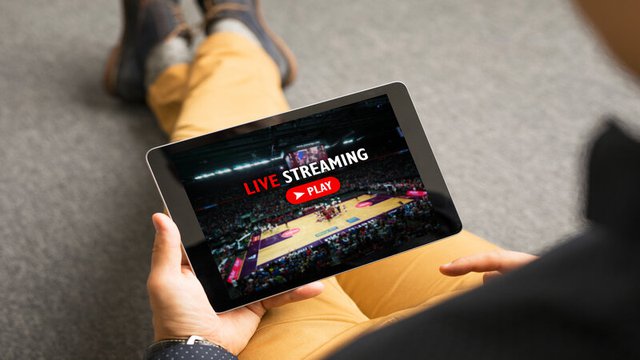

In recent years, Over-the-Top (OTT) platforms have fundamentally changed the way we consume entertainment and live events—particularly in the world of sport. Whether you're streaming a Champions League fixture on your phone or catching a Formula 1 race on your smart TV, OTT services are reshaping how fans connect with their favourite teams and athletes in real time.
Understanding how digital platforms impact sport is essential for marketers and media professionals alike. If you're looking to deepen your expertise in this evolving space, Universidad Europea offers both a Degree in Marketing in Madrid, a degree in Marketing in Valencia, a degree in Marketing in Malaga, and a Master in Marketing, programmes designed to equip future leaders with the tools to succeed in the digital-first sports industry.
But what exactly is OTT, how does it compare to IPTV, and what are the advantages and disadvantages of each? Let’s explore how this digital transformation is unlocking new opportunities for sports organisations and fans alike.
OTT (Over-the-Top) refers to media services delivered directly over the internet without requiring traditional cable or satellite TV providers. Popular OTT platforms include Netflix, Amazon Prime Video, Disney+, and HBO Max. These services enable users to stream content at any time, from any device, using dedicated apps or websites.
While OTT delivers content over the open internet, IPTV (Internet Protocol Television) is streamed through a private, managed network, usually operated by a telecom provider. IPTV is commonly bundled with broadband and phone services and often accessed through a set-top box.
Both OTT and IPTV use internet protocols to transmit video, but they differ in critical ways:
OTT is delivered through public internet connections, making it highly accessible via any internet-enabled device. IPTV, on the other hand, uses a controlled, high-speed private network, often limited to subscribers of a specific provider.
OTT offers greater flexibility and user control. You can subscribe to multiple services, cancel at any time, and enjoy content on-demand. IPTV typically involves longer-term contracts, limited content libraries, and access through provider-specific hardware.
OTT services usually follow a subscription (SVOD), advertising-supported (AVOD) or pay-per-view (TVOD) model. IPTV may seem convenient as part of a bundle, but users often pay for services they may not actively use.
OTT platforms personalise content using algorithms and provide a true on-demand experience. IPTV mirrors traditional television, with scheduled programming and limited personalisation.
IPTV generally offers more consistent quality as it operates on managed infrastructure. OTT quality can vary depending on your internet speed and network congestion, particularly during live sports events.
Now that we understand the basics, let’s explore how OTT is transforming how sports content is broadcast, monetised, and experienced by fans around the globe.
OTT platforms have removed the geographical restrictions of traditional broadcasting. A single event can now be streamed to a global audience, reaching millions of viewers simultaneously, regardless of stadium capacity or regional TV rights.
This is particularly beneficial for niche sports or emerging leagues, allowing them to grow their fanbase and visibility without relying on mainstream broadcasters. Platforms like DAZN, FIFA+, and ESPN+ are leading the way in internationalising sports content through OTT.
According to PwC’s Global Sports Outlook 2025, digital media rights now represent nearly 25% of all sports media revenue, a figure expected to rise. OTT enables sports organisations to adopt new monetisation models, such as:
This creates opportunities to diversify income streams, particularly for clubs looking to reduce reliance on ticket sales or merchandise.
With OTT, clubs and federations are no longer dependent on third-party broadcasters for fan engagement. By owning the streaming experience, they gain access to first-party user data, including:
This data can be used to personalise content, build loyalty, and offer advertisers highly targeted placements—making OTT a valuable marketing tool as well.
OTT platforms go far beyond passive viewing. Thanks to digital innovation, they enable interactive features such as:
These features foster deeper emotional connections, turning viewers into active participants and increasing long-term fan value.
If you’re excited by the potential of digital technologies in sport, Universidad Europea offers industry-relevant programmes that can help you stand out in this competitive field:
Both programmes include real-world case studies, exclusive events in collaboration with Real Madrid, and internship opportunities with top-level sports companies.
For those looking for a broader business foundation, the Degree in Marketing and Master in Marketing also provide the essential tools to succeed in sports, media, and beyond.
OTT platforms are transforming how we access sports and entertainment. From global scalability to data-driven engagement, the shift from traditional broadcasting to digital streaming is reshaping fan experiences and business models alike.
Interested in shaping the future of sports and media? Explore a career-defining sports master degree at Universidad Europea and take the next step towards a dynamic, digital-first future.